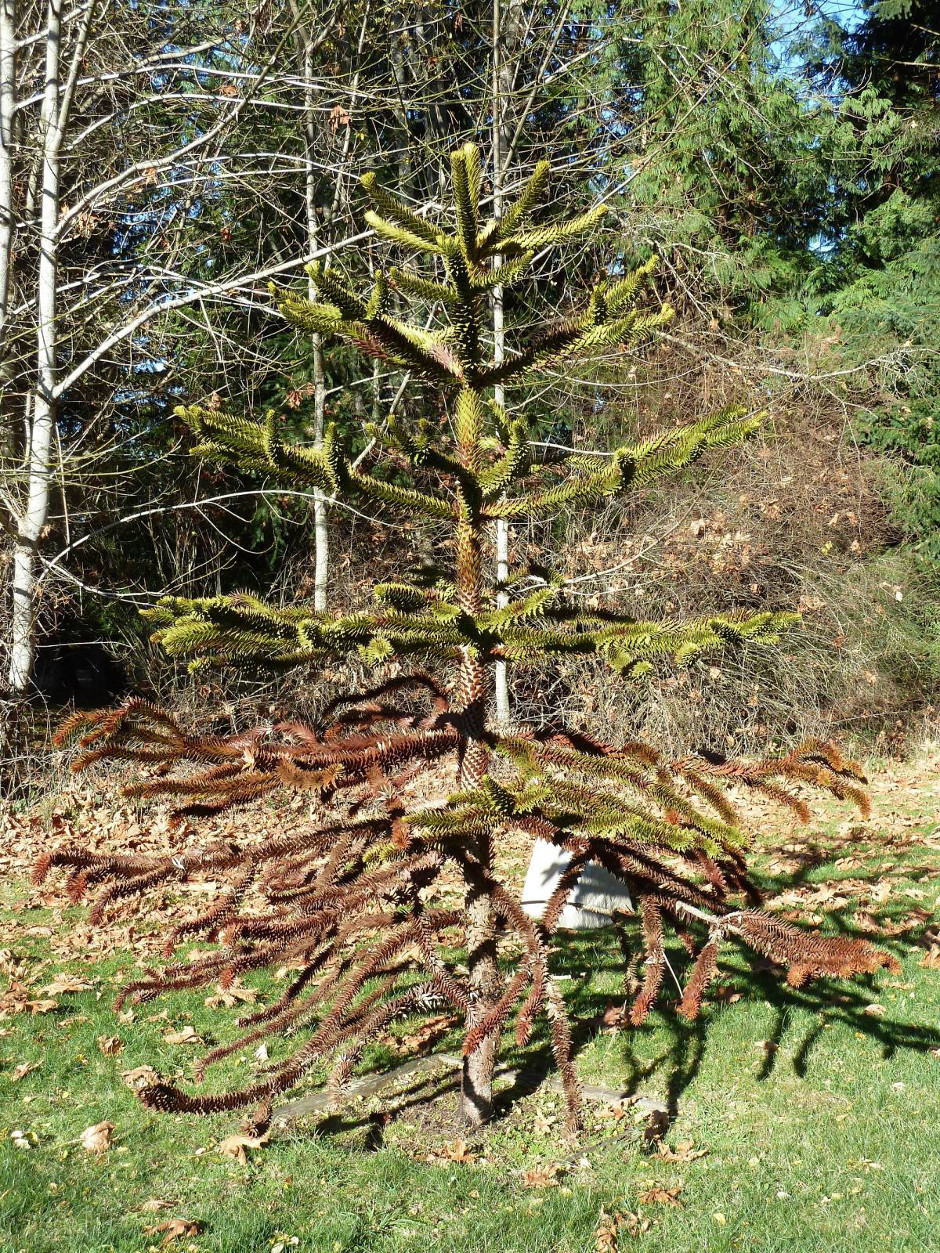Growing in my neighbourhood, I have watched these two monkey puzzle (Araucaria araucana) trees for some three or four years. They receive the same amount of light, are the same distance from the road, grow in very similar soil and receive the same sparing amounts of dry season water.
The ocean breezes and prevailing winds affect the trees equally. One is thriving and one clearly dying. The only readily identifiable reason for the obvious difference is the health the trees is the difference in their drainage. The vigorous tree ( above) is atop a small hill and the failing tree ( below )sits in a hollow near a natural pond.
In the Pacific North West (or is Wet) we receive a good deal of cool season moisture. As these two trees clearly demonstrate, attention to winter drainage is critical. This especially important to remember as we are all trying to use plants that will tolerate our dry summers with little or no irrigation.
Araucaria araucana
Araucaria araucana is an evergreen tree native to central and southern Chile and western Argentina. Hardy to zone 7 it is a member of an ancient species, so called living fossils.
The Araucaria arucana is the hardiest member of the Araucaria genus and tolerates temperatures to -20 degrees C. A popular garden tree grown in western Europe, the west coast of North American as far north at Haida Gwaii, it can grow to 40 m with a 2-m trunk diameter.
Preferring well-drained slightly acidic volcanic soil, but when well drained it will tolerate almost any soil. They will tolerate exposure to to coastal sea spray but not exposure to pollution. They are long lived trees and once established can live up to 1,000 years. Due to its declining abundance its was added to the Endangered species list by the IUCN 3.1 in 2013





